Diversity
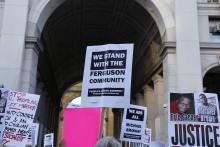
This week, I saw a torrent of debate about who reached for the gun and why police don’t shoot people in the leg rather than taking their lives. Neither angle seems to capture the bigger story at play on the evening news and fueling protest marches across Missouri.
On Sunday I preached to my church on race, current affairs and how to process — in a biblically loving way — what has been happening to brothers and sisters in Ferguson. (See video below) Talking about race and current affairs can be taboo in evangelical churches, and it was interesting as I saw a few couples exit the back door as I spoke.
Last week, I penned my thoughts on why we should pray for the saints in Ferguson. It was the outgrowth of my personal frustration and the pain I feel over the misunderstandings on race that can pervade the majority culture.
Race, Current Affairs & Prayer from Antioch Church on Vimeo.
Last night, Washington, D.C., residents young and old gathered in the Columbia Heights neighborhood to protest the shooting of Michael Brown, stand in solidarity with those on the front lines of continued protests in Ferguson, Mo., and let our governmant and law enforcement officials know that #BlackLivesMatter. The protest was organized by a Howard University student who hails from St. Louis and "needed to do something" given the reports she received from friends and family on the ground in Ferguson.
About a dozen Sojourners employees were in attendance. Check out the video below with testimony from two protestors who spent some time over the last week in Ferguson.

I’ve been calling it the Summer of Helplessness.
From the conflict in Gaza that has left more than 1,000 civilians dead, to the downing of Malaysia Airlines Flight 17 over the skies of Ukraine, to the Ebola breakout getting worse by the day, to the shooting of yet another unarmed black teenager here in the U.S., the news of late is enough to make a person feel paralyzed with helplessness and despair. My prayers these days are of the tired, desperate sort: How long, O Lord? Will you hide your face from us forever?
But when it comes to violence and oppression, we are rarely as helpless as we think, and this is especially true as the events unfolding in Ferguson force Americans to take a long, hard look at the ongoing, systemic racism that inspired so many citizens to protest in cities across the country this week.
I’ve heard from many of my white friends and readers who say they aren’t sure how to respond to the anger and grief they are watching on TV or hearing from their black friends. They want to be part of the solution but don’t know where start. They may even feel a little defensive when they hear people talking about white privilege or inaction on the part of white Christian leaders. I’m in the process of learning too, but as I’ve listened to people of color whose opinions I trust, I’ve heard them issue several calls to action we can all heed.

As America began to gear up for its incredibly wasteful (more than $40 trillion since 1972) and utterly futile “War on Drugs,” there were three critical federal actions that contributed to our current vastly over-militarized police forces.
In 1981, the Military Cooperation with Law Enforcement Act was passed. This law authorized military collaboration with civilian law enforcement agencies and dramatically expanded the Army’s participation in counterdrug efforts and included arming and training of local police with military grade weapons, free of charge, at the discretion of the Secretary of Defense.
Then, in 1984, Congress passed the Comprehensive Crime Control Act, supposedly to assist in controlling the crack cocaine infusion in urban communities. This law, tied to a civil forfeiture provision, allows law enforcement to seize property without a conviction, or even charges being levied, if a person is suspected of illegal drug activity.
Finally, in the 1990 National Defense Authorization Act (each year this bill funds our military) there was included a provision — “Section 1208” — that allowed the Secretary of Defense to transfer weapons and ammunition that was “suitable for use by such agencies in counter-drug activities.” This law was supposed to give police the firepower needed to “effectively” execute the Drug War. In the 10 years that followed, thousands of tanks, helicopters, grenade launchers, and assault rifles were granted to municipal police forces.
But the militarization of our police forces was not yet complete.
Enter the “War on Terror.”
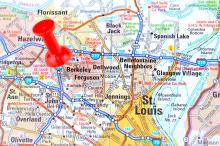
I am white. Most of the people near my house are white. This is the way it is for most of us white people in the U.S., and as we continue to be shown, the consequences are both critical and countless.
While the Fair Housing Act of 1968 prohibits all forms of housing discrimination, the U.S. Department of Housing and Urban Development estimates that millions of instances occur each year, thus residential segregation continues to be a common facet of modern day life. To put it simply, white people tend to live by other white people, and it is the way it is by no accident.
Segregated neighborhoods are often reinforced by the practice of racial “steering” by real estate agents, or when landlords deceive potential tenants about the availability of housing or perhaps require conditions that are not required of white applicants. In addition, lending institutions have been shown to treat mortgage applicants differently when buying homes in non-white neighborhoods in comparison to their attempt to purchase in white neighborhoods. As a result of such practices, white people tend to live in a state of residential separateness, for as the most recent U.S. Census date confirms, genuine racial integration is — for the most part — alarmingly rare.
Of course, our own behaviors contribute to our current state of affairs. White people seem to prefer housing located by other white people. As a result, far too many white people are willing (and able) to pay a premium to live in predominantly white neighborhoods. So equivalent housing in white areas commands a higher rent than others, and through the process of bidding-up the costs of housing, many white neighborhoods effectively shut out people of color, because those without white skin are more often unwilling (or unable) to pay the premium price to buy entry into such white neighborhoods. As a result of such white flight and isolation, not only do we witness a rise in racial ignorance and indifference, but it also leads to increased injustice in the form of disproportionate hostility directed at people of color.

In recent years, my family has navigated some rough patches: death, cancer treatments, open heart surgeries, chronic disease, etc. Now, I’m certain this isn’t everyone’s experience, but mine has been that in these times of trauma or tragedy, family comes together to stand with one another as we wrestle through life’s crap. We aren’t picking fights, we are crying on each other’s shoulders.
In recent months, our human family has been enduring an especially rough patch.
War.
Racism.
Suicide.
Deadly viruses.
Plane crashes.
Whether in remote villages or urban centers, few have been untouched (in some way) by the realities unfolding.
As I observe our corporate response to tragedy as a human family, and evaluate my own response in the midst of it, I have noticed something disturbing unfold. Rather than rally together as a family navigating a season of trauma, we have used this moment to divide, stir hatred and misunderstanding, point fingers, and more than anything, view those on the opposite side of an issue as less than human.
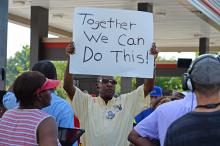
It was July 19, 2013, and we were leaving New York City for a spiritual retreat, six days after a Florida jury found George Zimmerman “not guilty” in the death of Trayvon Martin. The sadness, anger, and weariness was well worn on the liturgies, prayers, and preaching of many of the churches in our Harlem neighborhood.
We found ourselves joining local church leaders and a few pastors in a conversation about justice that would eventually make its way toward a broad range of matters: the gay rights of questioning teens, clean water for children in Africa, and many of the frequent places conversations go with folks who are concerned with “loving our neighbor.” And so we sat, we listened, and were genuinely moved to openly share about the challenges and opportunities that have come with cultivating safe spaces for GBLT folks in our church community. TOGETHER we also inspired one another as we offered our collective experiences with integrating the arts in fundraising for international relief efforts.
And as Jose and I sat, listened, and shared TOGETHER, we found ourselves with heavy hearts waiting …“Would the conversation broach the tragedy of Trayvon Martin?” It didn’t.
And as we sat TOGETHER in sacred solidarity with compassionate, justice-minded pastors, who happened to be white, somehow we found ourselves feeling quite alone. So we mustered the courage to ask, “How have your churches responded to the Trayvon Martin verdict?” My question was met with silence. The silence that met us did not betray aloof or timid spirits, but rather uncertainty about whether their one voice could really make a difference, or that somehow they did not have the right to “speak on behalf” of brown and black realities.

Christians often talk about actively changing the world, but too often, we just sit still and passively watch the struggles of others without participating, leading, or caring. We don’t love.
Why? Because many Christians have an inability to use their imaginations.
People who can’t imagine are susceptible to bigotry, racism, hatred, and violence toward others. Why? Because they can’t imagine any other scenario, perspective, or opinion other than their own. They have an inability to see themselves in someone else’s shoes. They can’t see beyond their own narrow reality.
When you can’t imagine, you can’t empathize, understand, or relate with the actions, struggles, pain, suffering, persecution, and trials of others — you become apathetic, unmoved, stoic, and inactive.
Whether our differences are gender-related, age-related, race-related, culturally related, politically related, economically related, socially related, theologically related, value-related, or related to any countless number of factors, overcoming them requires imagination.
When you can’t imagine, you can’t celebrate, appreciate, admire, and joyfully love others. You disconnect yourself from humanity.
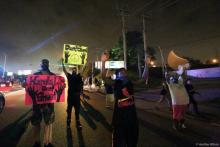
I have so much emotions and thoughts in my mind, heart, and body – in light of the oh-so-much that is going on all around the world – including the utterly tragic, brutal, and unnecessary “death” of Michael Brown.
But I thought it would be helpful to share a few thoughts how churches, Christians, and leaders can be engaging the events of the past 11 days in their respective churches – now and in the future. I’m not suggesting that pastors have to completely alter their sermons or Bible studies, but to altogether ignore the injustice of Michael Brown’s death would be altogether foolish.
To be blunt and I say this respectfully,
The integrity of the church is at stake because when it’s all said and done, it’s not a race issue for me — it’s a Gospel issue. It’s a Kingdom issue. We shouldn’t even let isolated issues in themselves hijack the purpose of the church. The Gospel of Christ is so extraordinary that it begins to inform (and we pray, transform) all aspects of our lives. So, in other words, we talk about race and racism because we believe in the Gospel.
So, here are five suggestions for Christians, leaders, and churches.
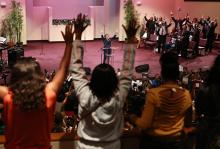
Civil rights leader the Rev. Al Sharpton told a packed church on August 17 that the Michael Brown case would mark a defining moment in civil rights history and fundamentally change the way police engage with the African-American community.
“Michael Brown is going to change this town,” Sharpton said to a massive, boisterous crowd that clapped and shouted in response.
Hundreds filled the pews of Greater Grace Church. More crowded into the foyer, and hundreds remained on the parking lot unable to enter, all in a show of support for the African-American teenager who was shot by a police officer on August 9.
Sharpton announced a future march in Washington on policing. He criticized the militarization of police, saying they act as if they are “at war with…citizens.” Sharpton urged the crowd to start showing up at the polls to vote and make a difference in the lives of African-Americans.
“Nobody can go to the White House unless they stop by our house,” Sharpton said. “We’ll be here until justice is achieved.”
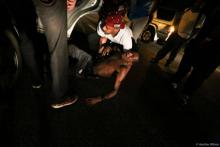
Editor's Note: Rev. Alvin Herring is on the ground in Ferguson, Mo. Following is his account of the events of Aug. 17.
Last night democracy was trampled not as the media would suggest by the angry footfalls of sullen youth determined to disturb the peace and wreak havoc in their own community, but by the heavy march of a police force that seemed determined to create tension and antagonize young people — young people who are carrying the trauma of nights of unrest and lifetimes of dehumanizing racism.
We witnessed with our own eyes beautiful young people peacefully marching in step to cries of “hands up, don’t shoot.” We saw the very young holding older siblings’ hands and the old being pushed in wheelchairs by teenagers who had pain in their eyes but strong voices lifting up their laments to a nation that must find the will to hear them. And though they were clearly agitated, they were courageously hewing to the commitment to act peacefully in the face of an overwhelming police response that seemed determined to escalate an already tense situation.
Law enforcement was outfitted with the machinery of war. The officers wore military fatigues and carried automatic weapons. They were helmeted, with their faces obscured, and in the darkness they looked more like machines than human beings. They perched atop huge military vehicles with glaring lights and screeching sirens. It was otherworldly — and all of this to face down a group of wounded children, wounded tonight and many nights before this night.
 Editor's Note: Violence, anger, and confusion continues in Ferguson, Mo. Former Sojourners intern and current Digital and Creative Director for PICO Heather Wilson is reporting from the scene and shared her eyewitness account with Sojourners and others late Sunday night. We share it here as an important perspective in the ongoing unrest and confusion. Please keep the safety and wellbeing of all people in Ferguson in your prayers.
Editor's Note: Violence, anger, and confusion continues in Ferguson, Mo. Former Sojourners intern and current Digital and Creative Director for PICO Heather Wilson is reporting from the scene and shared her eyewitness account with Sojourners and others late Sunday night. We share it here as an important perspective in the ongoing unrest and confusion. Please keep the safety and wellbeing of all people in Ferguson in your prayers.
"Captain Johnson and the police force in Ferguson IS LYING, AND I AM BEARING WITNESS.
Two hours before curfew, I was photographing at the front of a peaceful march of all generations, calling for justice and peace in Ferguson. It was controlled and respectful—when someone stepped out the traffic lane they were marching in, they were directed back.
Without provocation, armored cars rolled up on us...yelled unintelligibly for 60 seconds and launched tear gas at us without warning. Women...children...even a woman in a wheelchair.
Captain Johnson is saying that bottles and Molotov cocktails were thrown at the front line. TONIGHT I CAN TESTIFY THAT THIS IS UNTRUE."
[view:Media=block_1]

Our nation has a problem. It is not a “black” problem or a “white” problem, but a “human” problem that we all succumb to — and have the power to change. Our beloved nation was NOT “conceived in liberty” OR “dedicated to the proposition that all men are created equal,” despite President Lincoln’s well-intentioned words. That was the hope, but it has never been the reality.
Many of my African-American sisters and brothers are furious. Yet another child has been felled. The challenge is this — if a tree falls in the forest and white folks don’t hear it, does it make a noise? Many of us who are white do not have the contextual experience or the “ears to hear” to understand the fear and the fury.
More than a decade ago, I pastored in a community that was predominately African American. It grew from 72 percent to 98 percent black in just seven years as a result of “white flight.” In the course of this time, the police force struggled because it didn’t listen to the people. Most of the officers were white and could legally live up to 30 miles away; as a result many (including the chief) lived in another state.
At one heated meeting, the police chief informed us what we “could” and “could not” do as we discussed community initiatives that included the older white and adolescent black residents in conversation and collaboration. Finally, as the pastor of one of the larger churches in town, I stood up and said, “Chief, please understand that we are not asking for your permission. We are telling you what we, as citizens of this town, are going to do. Now we need to know — are you with us? Or not?” The African-American residents stood and clapped loudly. I felt their pain and the reason for what some perceived as “paranoia,” but what I knew to be legitimate fury.
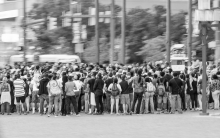
Editor's Note: In light of this week’s events in Ferguson, Missouri, several writers at ON Scripture took a few moments to reflect upon what they would/will be preaching on this Sunday. To continue the conversation, join on Twitter at #onscripture.
Eric D. Barreto, Associate Professor of New Testament, Luther Seminary: St Paul, MN
The last thing a preacher wants to do on a Saturday night is to log into Facebook.
I exaggerate, of course, but I found myself scrambling last week when I learned of Michael Brown’s shooting last Saturday. My sermon for Sunday morning was ready to go. But I had to reassess all my work when I heard the witness of so many African American friends in particular as the news from Ferguson began spreading across social media. The frustration and disbelief, rage and disappointment, resignation and passion I heard moved me. But even more convicting was the fact that so many others were simply unaware of this event at the moment and unfazed by its repercussions.
In certain communities, no one had to pay attention to Michael Brown. In certain communities, his death did not resonate with significance. In certain communities, no one would confront the preacher and ask why she did not respond to the death of this young person.
And yet in other communities, his death was a touchstone, a cause for prayer and lament and righteous anger and faithful expectation.
These distinct reactions are a raw reminder that our communities of faith remain largely segregated. Though we worship the same God, the contexts within which we seek God’s face are radically different. In such a divided context, what does it look like to love your neighbor? What does it look like to be “one” church even as we are profoundly divided?

Civil rights and religious groups say efforts to rid federal agencies of anti-Muslim bias have faltered and prejudice against Muslims persists, particularly in the training of anti-terrorism officers.
On Thursday, 75 groups—including the Council on American-Islamic Relations, Auburn Seminary, and the NAACP—sent a letter to the White House urging an audit of federal law enforcement training material.
“The use of anti-Muslim trainers and materials is not only highly offensive, disparaging the faith of millions of Americans, but leads to biased policing that targets individuals and communities based on religion, not evidence of wrongdoing,” the letter reads.
A National Security Council representative said the letter will be reviewed and a response issued.
“As we said when these news reports first came to light, the use of racial or ethnic stereotypes, slurs or other similar language by employees is both unacceptable and inconsistent with the country’s core values,” said Caitlin Hayden, National Security Council spokeswoman.
The groups point to a reference to “Mohammed Raghead” in a memo and the claim by a former FBI official that the CIA’s director is a “closet Muslim.”

On the fourth morning after Michael Brown’s death, residents from different parts of the region came together to pick up the pieces.
Some were young, some old. The majority arrived as part of the faithful. Others trickled in after spotting volunteers marching up and down West Florissant under the hot sun. Carrying brooms and large garbage bags, they collected whatever they could find: rubber bullets, broken glass, liquor bottles, tear gas grenades.
“I needed to come out today just to get some stability,” said Gary Park, 34, an auto mechanic who lives near the area in Ferguson where Brown was shot and protests erupted. Close by is the looted and burned QuikTrip that sits as a symbol of the severity of the unrest that resulted from an unnamed cop fatally shooting an unarmed 18-year-old.
“I wanted some encouragement,” Park said.
Park is a member of Passage Community Church in Florissant, which together with a few other local congregations, organized the Wednesday morning cleanup. Pastor Joe Costephens said that although the trash-collecting effort was a last-minute plan, more than 100 people joined the endeavor.
It was a simple act but not an insignificant one, especially since authorities reported two shootings only the night before. In fact, the continued violence has put future volunteer efforts on hold, Costephens said.
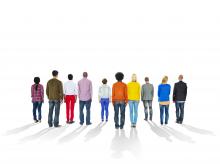
A study came out recently saying that millennials (a category that I apparently fit into) consider ourselves the “post-racial” generation. By and large, young adults think they are the ones who have moved past racism.
Except, that’s not true. Racism is alive and well.
Here at Sojourners I’m privileged to be a part of enlightening conversations about diversity, racism, sexism, and a whole host of other injustices. This makes it all the more frustrating when I try and continue those conversations outside the Sojourners community, and I’m met with resistance. Most of my friends are extremely uncomfortable discussing race. And not just because it’s a taboo subject; this is D.C., after all, and politics are always fair game in friendly discussion. Instead, I’ve found that my friends are so unsettled by the subject that they either try and change it, or they tell me it’s not about race, it’s about income inequality. Those arguments, which I follow up with “where do you think the income inequality came from?,” are still met with resistance, and arguments that if we could just bring people out of poverty, the racial disparities would vanish.
Except they wouldn’t.
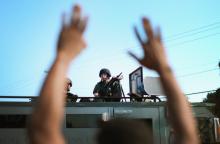
Over the past three weeks there have been four separate incidents that have led to the deaths of four unarmed black men at the hands of police. For many black people, myself included, the moments following these tragic events are filled with despair, sorrow, anger, and frustration. Each incident serves as a reminder that as a black man in America, my life holds little to no value in the eyes of the general public. To be young and black in the United States means to live under constant pressure, something most non-black American citizens know nothing about.
For the majority of black people, the police do not represent protection or safety, rather they are a menacing force that terrorize those they are supposed to serve. I have never felt safe in the presence of law enforcement. In fact, whenever police are in close proximity to me, I feel in danger. Whenever a cop drives behind me or beside me I feel anxious, not protected.
Is my paranoia justified?
In response to the death of Michael Brown, many people are using the hastag #IfTheyGunnedMeDown on Twitter to consider the role that images used by the media have on the public's perception of vicitms.
Which picture would the media use #iftheygunnedmedown the left or the right? pic.twitter.com/BXGjJFvRco
— Adam SLANDER (@mr_mookie) August 10, 2014
Here's more according to the Washington Post:
The concern is how media will portray a dead child’s life after he’s slain by police officers. This is the stuff of#IfTheyGunnedMeDown, a Twitter hashtag that trended Sunday as part of the conversation surrounding the death of Michael Brown. Brown, 18, was an unarmed black teenager slain in Ferguson, Mo. He’d recently graduated high school. Black users shared pictures of themselves at their best — in uniforms or caps and gowns — juxtaposed with images that would garner less sympathy and perhaps paint more tawdry pictures of their lives.
SIXTY YEARS AGO, Brown vs. Board of Education held that it was unconstitutional to have separate public schools for black and white students. Fifty years ago, a landmark piece of U.S. civil rights legislation was enacted that outlawed discrimination based on race, color, religion, sex, or national origin. By design it was to end, among other important things, educational racial inequities by eliminating separate educational experiences based on race.
Yet today, no matter how we view the data, children of color, especially African-American boys, show unequal levels of achievement—well below their white classmates. Data from the National Association for Educational Progress (NAEP) shows 38 years of limited-to-no change in rates of achievement for African-American and Latino children. Schools across the country are still distinctly segregated by race, and the willful interest and resolve to lead on these issues remains sluggish.
Overcoming systemic racial achievement disparities among children in our public schools is an overarching moral imperative of our day.
How is it that we cannot collectively rupture this trajectory—more than half a century later—“with all deliberate speed”? As an educational leader I find myself focused on these questions: Are those invested in educating our children interested enough? Do we actually know how to educate all students equitably? Where is the resolve among us to make lasting change for all children? I believe that, if we are interested, we’ll learn. And that once we know how, we can change this narrative—but only if we are resolved to insist on positive change no matter the cost.